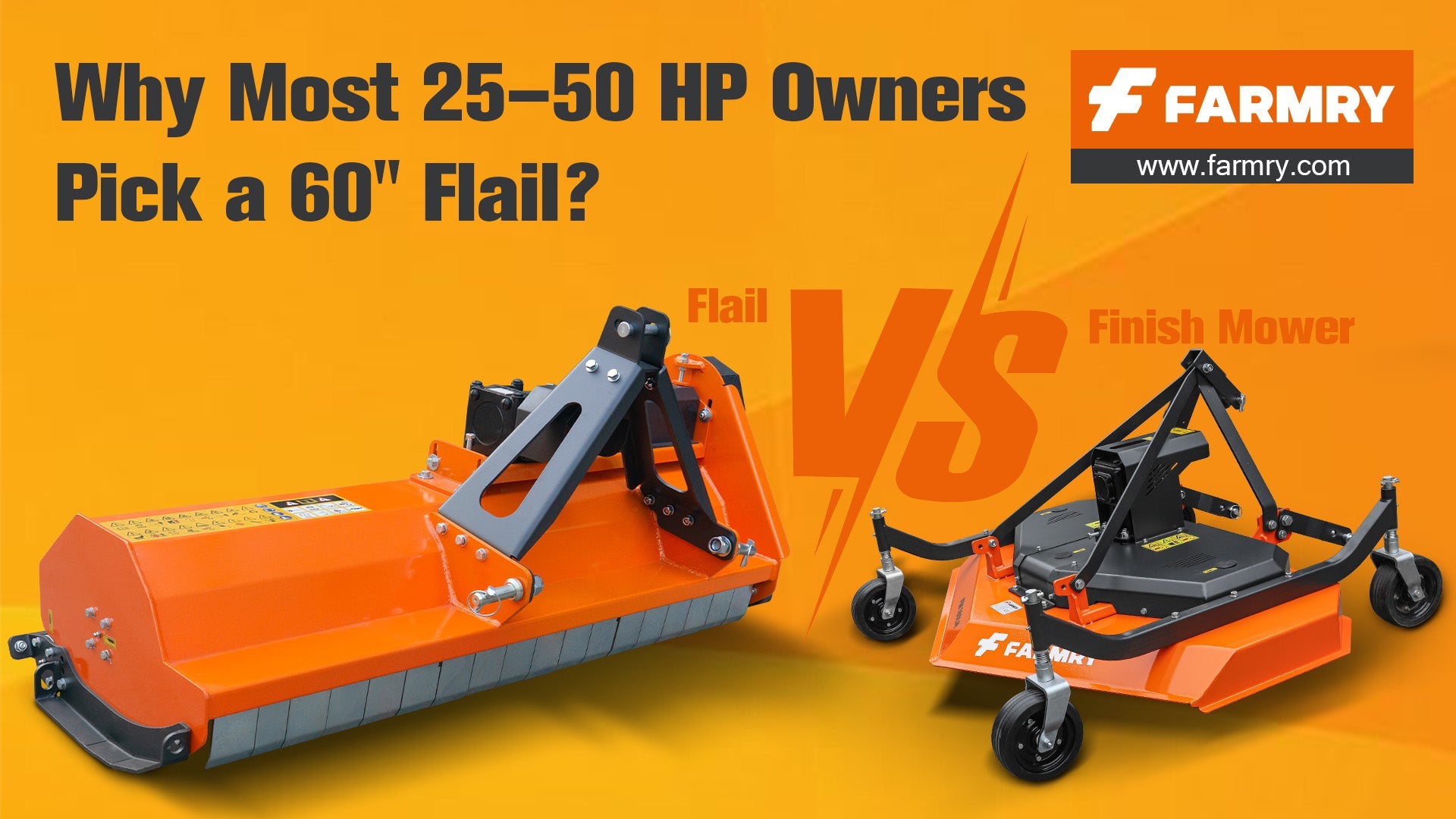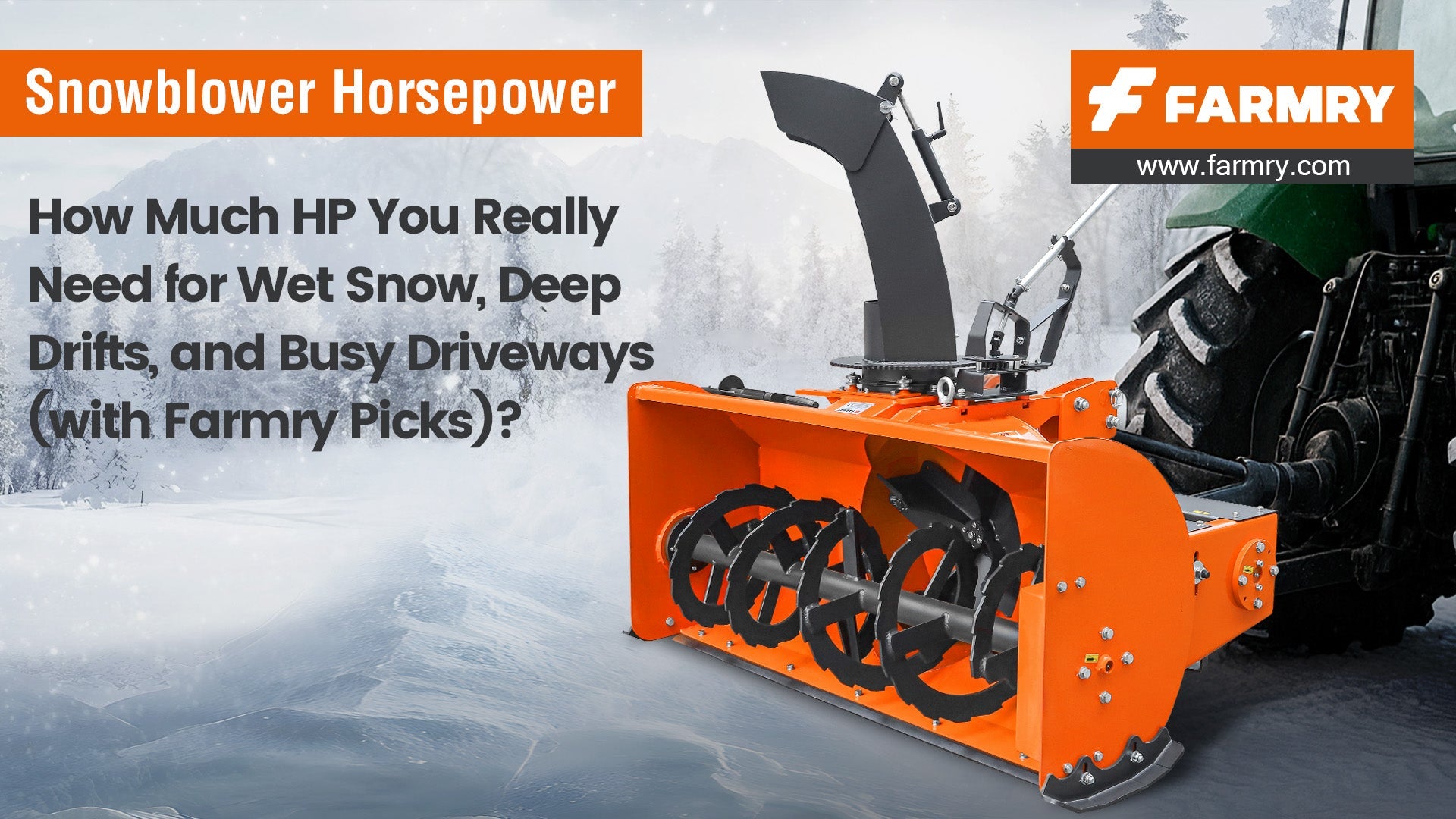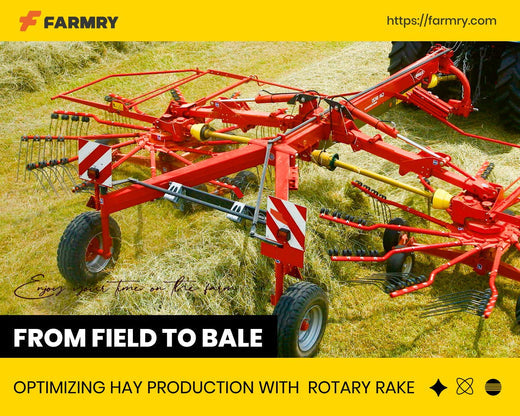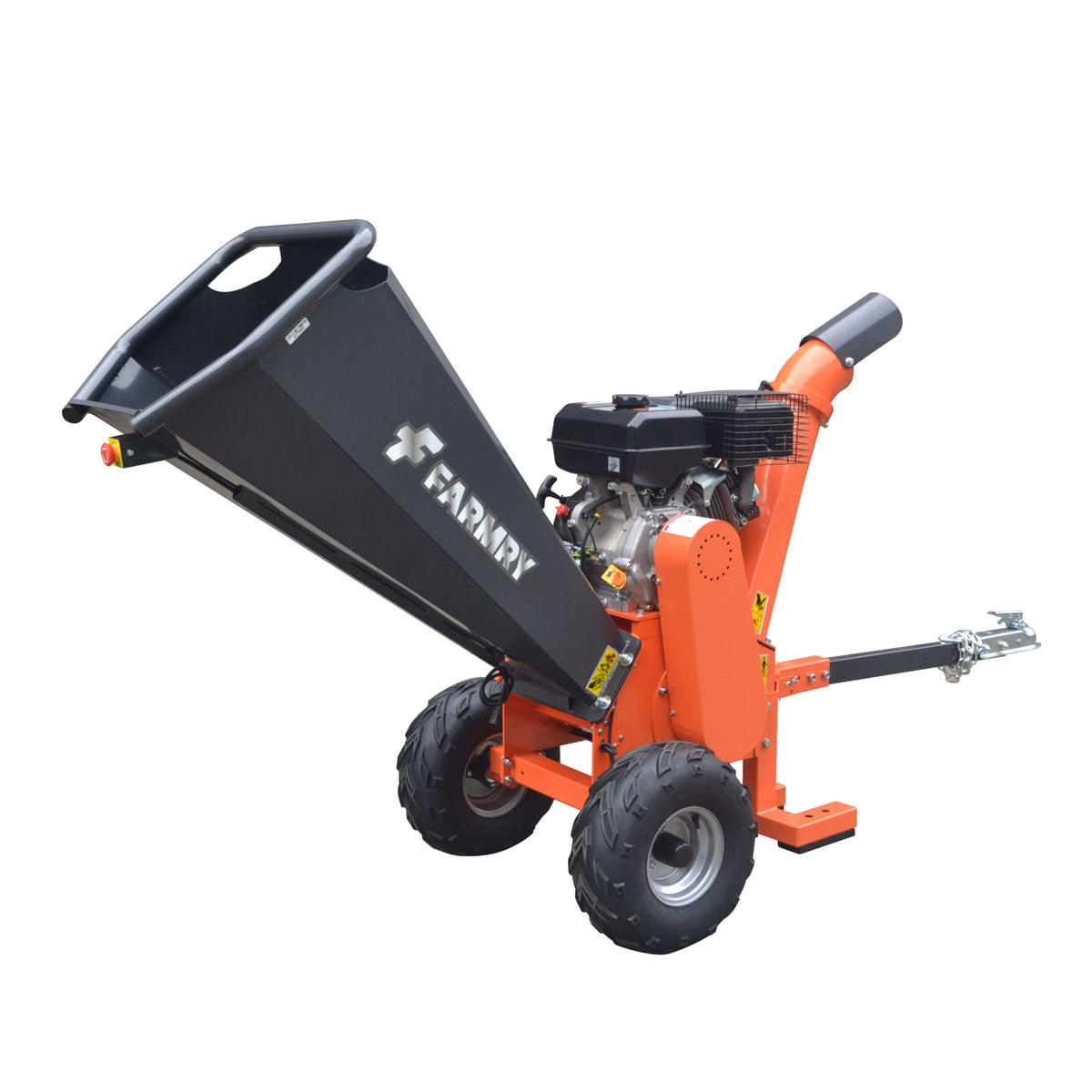Remote Control Slope Electric 20-Inch Lawn Mower: Why Farmry’s 20-Inch Class Is the Top Choice For Tough Terrain
 The landscaping industry is transforming fast. Remote control lawn mowers—especially compact, 20-inch-class electric and remote controlled tracked units—are changing how people mow steep slope areas, rough banks, and tight spots where walk-behind mowers struggle. If you manage lawns, sports fields, roadside slopes, retention ponds, or any field with tough terrain, a remote control lawn mower can combine safety, efficiency, and pure productivity in one powerful package. Below, we break down why a remote control slope electric 20-inch lawn mower (and Farmry’s 20-inch-class remote controlled lineup) is an ideal fit, how it boosts commercial mowing results, and what to check before you order.
The landscaping industry is transforming fast. Remote control lawn mowers—especially compact, 20-inch-class electric and remote controlled tracked units—are changing how people mow steep slope areas, rough banks, and tight spots where walk-behind mowers struggle. If you manage lawns, sports fields, roadside slopes, retention ponds, or any field with tough terrain, a remote control lawn mower can combine safety, efficiency, and pure productivity in one powerful package. Below, we break down why a remote control slope electric 20-inch lawn mower (and Farmry’s 20-inch-class remote controlled lineup) is an ideal fit, how it boosts commercial mowing results, and what to check before you order.
What is a Remote Control Slope Electric 20-Inch Lawn Mower?
Think of it as a compact robotic mower you operate at a distance—no pushing, no slipping on wet grass, and no wrestling a machine on a 30–35° steep slope. A remote control lawn mower in the 20-inch deck class is small enough to snake between obstacles yet wide enough to keep speed and productivity high on routine mowing. On electric platforms, torque delivery is instant, noise is low, and efficiency shines. Pair that with a tracked undercarriage and you get outstanding traction on tough terrain where wheels spin out.
Why 20 inches? It’s a sweet spot. A 20–21" cut balances power, maneuverability, and control. It’s narrow for gates, culverts, solar rows, and pond edges, but broad enough to keep route times competitive. For many customers, 20 inches is the “do-most-work” deck size.
Farmry’s 20-Inch-Class Remote-Controlled Slope Mowers
Farmry offers remote controlled tracked mowers in the 20-inch class that are designed for banks, ditches, and smaller-format commercial mowing. Their tracked stance and low center of gravity give you reliability and predictable control on slopes. Models in this family are ideal when you need to mow where footing is sketchy, visibility is limited, or access is cramped.
Tip: When choosing between rc electric lawn mower platforms and other powertrains, confirm the exact configuration on the product page (battery specs, charge times, or engine details), then choose the variant that matches your runtime, torque, and fleet charging needs.
Safety First: Why Remote Control on Slopes Matters
Working on hills is risky. A traditional walk-behind mower can slide, tip, or yank an operator downhill. With a remote control lawn mower, the operator stands on flat ground while the mower crawls the bank. That single change dramatically reduces risk and labor strain.
Key safety advantages:
-
Distance and visibility: Stand safely away from rock throw, bees, and debris while still seeing the mower cutting grass in real time.
-
Low-slung tracks: Tracked frames distribute weight, improve traction, and reduce scalping.
-
Instant stop: A remote “button”-based e-stop gives you decisive control if the unit meets an obstacle.
-
Slope discipline: A compact deck maintains blade speed and cut height more consistently on angles than oversized decks that bridge uneven ground.
For municipalities, campuses, and contractors, this approach is quickly becoming the top choice for safety and compliance.
Efficiency That Pays Back—Fast
In commercial mowing, time is money. A remote controlled slope mower improves productivity in three ways:
-
Lower operator fatigue – Operators aren’t muscle-pushing; they’re guiding. Less fatigue means steadier pace and more acres in a month.
-
Fewer passes – With the right blades and properly set cut height, a 20-inch deck can “thread the needle” between posts, fence lines, and trees, reducing trim time.
-
Transportable – The compact footprint fits more easily on trailers and ramps, and requires fewer tie-downs. That’s real-world convenience.
Add in electric drive (where configured) and you get whisper-quiet operation for early-morning starts, residential routes, or noise-sensitive venues—perfect for customers who value peaceful neighborhoods and greener equipment innovation.
How Remote Control Electric Mowers Handle Tough Terrain
Tough terrain throws three challenges at any lawn mower: traction, stability, and consistent blade tip speed. The 20-inch class answers each:
-
Traction: Tracks spread force across soft ground, gravel edges, and damp slopes.
-
Stability: A compact, low-center design hugs the hill; you operate from safety.
-
Blade performance: Smaller decks hold rpm under load, maintaining a clean mow through thick grass.
On retention basins, levees, and roadside slopes, this mix is proven to tame clingy fescue, wild rye, and thatch without bogging or scalping.
RC vs Robotic: Know the Difference
Search traffic often mixes robot mowers (fully autonomous) with remote control lawn mowers (you steer them). Both are innovation stories, but they serve different jobs:
-
Robotic (autonomous) mowers excel on uniform lawns with boundary wires or virtual zones.
-
Remote controlled mowers rule uneven terrain, banks, and places where you want human decision-making—right now.
If you manage mixed sites—flat lawns at the front, steep slope in the back—there’s no rule against running both. Use a robotic unit for daily cutting grass on the easy areas and a Farmry remote controlled tracked unit for the scary stuff. That combo delivers the future faster than waiting for a one-size-fits-all machine.
How to Choose a 20-Inch Remote Control Slope Mower
Before you order, check these essentials:
-
Slope rating & field type
-
Power system
-
Cut quality & height of cut
-
Control and comfort
-
Safety features
-
Serviceability
-
Transport & storage
For snow and multi-season use, Farmry also offers the Remote Control Snow Mower Plow RMS20K, which brings the same remote control convenience to winter maintenance.
Commercial Mowing Use Cases Where 20 Inches Wins
-
Solar fields – The 20-inch profile slides under panel rows, trims around posts, and leaves tidy aisles.
-
Roadside banks & ditches – Tracked mowers maintain line while you stay clear of traffic and loose gravel.
-
Pond edges & levees – Hug the slopes without getting your boots muddy.
-
Athletic facilities – Clean edges along fences and berms without sending a crew with string trimmers for hours.
-
HOAs & campuses – Quiet operation (on electric builds) and precise control at the property edges.
Real-World Tips For Better Cuts on Slopes
-
Set the height one notch higher than you would on flat turf—this prevents scalp marks and helps the mower “float.”
-
Cross-cut steep banks: make one diagonal pass up, then the next down to even the stripe.
-
Keep blades sharp—smaller decks rely on perfect edge to keep speed and airflow.
-
Check tracks daily: debris packed in the drive lugs reduces efficiency and speed.
-
Test your route after rain; let the bank drain before you mow so the turf isn’t torn by traction.
Quick FAQ
Q1: Can a 20-inch remote control lawn mower keep up with bigger decks?
A: On dense terrain or narrow paths, yes. Fewer three-point turns and less trim time offset deck width. On wide open fields, larger decks still win raw acreage per hour.
Q2: How should I set cut height on a steep slope?
A: Choose a slightly higher height to avoid scalping. Then do a short test on a small patch and check the finish before committing the whole field.
Q3: Is electric worth it for remote control units?
A: Electric excels where low noise, low maintenance, and indoor storage matter. Evaluate route length, charger access, and duty cycle. If your day is stop-start with small banks, electric is a strong choice.
Q4: What about rain and debris?
A: Respect wet ground and inspect after each job. Clear the deck, clean the track path, and confirm the emergency button and transmitter are working before the next mowing session.
A Simple Buyer’s Checklist
-
Slope rating matches your site
-
20–21" deck width suits gates and obstacles
-
Battery or fuel system aligns with route length
-
Blade type matched to turf (mulch/high-lift)
-
Quick-swap parts and clear maintenance access
-
Remote ergonomics feel right in your hands
-
Tie-downs and trailer ramp angle verified
-
After-sales parts and support confirmed
Why Choose Farmry For Remote-Controlled Slope Mowers?
Farmry focuses on remote controlled tracked mowers in the 20-inch class that put control, power, and operator safety first. With compact footprints, aggressive tracks, and bank-friendly balance, they’re designed to tackle steep slope work where ordinary push lawn mowers hesitate. For pros and property managers who want a top choice that’s practical today—and points toward the future—Farmry’s remote control mower collection is an ideal starting point.
Ready to move from risky hand-pushing to smart remote control?
Don’t wait. Order a 20-inch-class Farmry remote control track mower that matches your sites, or check in with support to confirm specs for your exact terrain. The result is safer crews, faster turns, and cleaner lawns—day after day.







